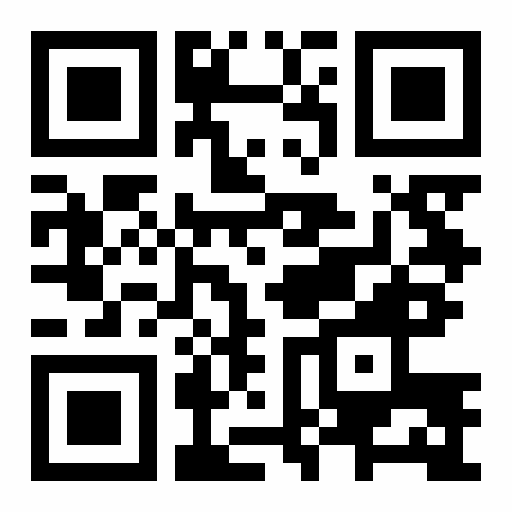
Applied Science Letters


Cutaneous Lieshmaniasis (CL) has been considered as a large hygienic challenge, and the epidemiological studies have been useful in controlling this problem, and also taking prevention stages. Khuzestan Province is one of the common foci of the wet or rural zoonotic CL in Iran. Due to the lack of data about the epidemiology and prevalence of CL in Abadan County (30°16′N 48°34′E) , this study was conducted in this area within 2011-2015.This descriptive-analytical study was based on 179 cases of CL submitted to the medical and health centers of Abadan County (30°42′02″N 49°49′53″E) during the past years. The study was done by extracting the demographic and epidemiologic data from a standard information questionnaire as well as analyzing the study data via SPSS software with chi-square and T tests. Demographic information– epidemiologic features, such as the number and location of lesions on the body, job, month, season, age, gender was collected. The patients were diagnosed by direct microscopic examination of the samples and clinical information. All ethical issues were also addressed. The average incidence rate was reported to be 0,15 /1000 person. The results revealed that the number of the infected cases in Abadan was 179 people during the study. The most frequent age group was 21–30 years old (24.6%). Meanwhile, about 54.7% of CL patients were male and 45.3% were female. Housekeepers had the highest incidence (29.1%) of CL. The analysis of the lesions on the different parts of the body showed that 24.3% of the lesions occurred on the hand, 20.1% on the foot, 14.5% on the hand as well foot, and 11.7% on the face. The maximum number of CL cases was reported in the autumn with 34.1%. Most of the cases were seen in October (14.5%) and November (12.3%). About 59.2% of the patients had one ulcer. The findings showed an increasing and decreasing trend of the incidence and prevalence rate of CL over the period study in this area. Also, CL has been remaining a health threat in the future. Therefore, it is recommended that the regional authorities pay more attention to control the spread of the disease.
Ayatollah J, Karimi M. The prevalence of cutaneous leishmaniasis (CL) in the villages of Abarkuh’ Yazd. Iranian Journal of Infectious Diseases. 2005; 10(30):13-18.
Martins LM. Eco – epidemiology of cutaneous leishmaniasis in Bariticupu , Amazon region of maranhao state , Brazil , 1996 – 1998 . Icad Saude publica. 2004; 20 (3):pp 735–743.
Babaei GR, Shayan A. An epidemiological study of cutaneous leishmaniasis and the investigation of scars with emphasis on seasons. Age and sex groups in Paalm, south of Lorestan province. Armaghan Danesh 2003; 8:51-57.
Postigo JA, leishmaniasis in the World Health Organization Eastern Mediterranean Region, Int J Antimicrob Agents. 2010; 36: 62-65.
World Health Organization (WHO). Control of the leishmaniasis: report of a meeting of the WHO expert Committee on the control of leishmaniases. 2010; WHO Technical Report Series. 949. Geneva.
Shirzadi MR, Bonakdar-Esfehani S, Mohebali M, Yaghoobi-Ershadi MR, Gharachorlo F, Razavi MR, Ruiz-Postigo JA. Epidemiological situation of cutaneous leishmaniasis in Iran during 1983 to 2013. Journal of Infectious and Tropical Diseases. 2016; 21(73):1-8.
Akhavan AA, Yaghoobi Ershadi MR, Mirhendi H, Alimohammadian MH, Rassi Y, Shareghi N, Jafari R, Arandian MH, Abdoli H, Ghanei M, Jalali-zand N, Khamesipour A. Molecular epizoothiology of rodent leishmaniasis in a hyperendemic area of Iran. Iranian j Publ Health. 2010; 39: 1-7.
Shirzadi MR, Cutaneous leishmaniasis control guideline in Iran. Zoonoses Control Department, Center for Communicable Diseases Control, Ministry of health and medical education, Tehran, Iran; 2012.
Sharifi I, Poursmaelian S, Emergence of a new focus of anthroponotic cutaneous leishmaniasis due to Leishmania tropica in rural communities of Bam district after the earthquake, Iran. Trop Med Int Health. 2011; 16 (4): 510-513.
Feiz-Haddad MH, Kassiri H, Kasiri N, Panahandeh A, Lotfi M. Prevalence and epidemiologic profile of acute Cutaneous Leishmaniasis in an endemic focus, South western Iran. Journal of Acute Disease.2015; 4(4): 292-297.
Kassiri H, Shemshad K, Lotfi M, Shemshad M. Relationship trend analysis of cutaneous leishmaniasis prevalence and climatological variables in Shush County, south-west of Iran (2003-2007). Acad Entomol. 2013; 6(2): 79-84.
Kassiri H, Kassiri A, Lotfi M, Farajifard P, Kassiri E. Laboratory diagnosis, clinical manifestations, epidemiological situation and public health importance of cutaneous leishmaniasis in Shushtar County, Southwestern Iran. J Acute Dis.2014; 3: 93-98.
Kassiri, A. Kasiri, H. Najafi, M. Lotfi, E. Kasiri , Epidemiological features, clinical manifestation and laboratory findings of patients with cutaneous leishmaniasis in Genaveh County, Bushehr Province, Southern Iran J Coast Life Med2014; 2 (12). 1002-1006.
Jones T, Johnson W, Barretto A, Lago E, Badaro R, Cerf B, et al. Epidemiology of American cutaneousleishmaniasis due to Leishmania braziliensis brasiliensis. Journal of Infectious Diseases 1987; 156(1):73-83.
Mujtaba G, Khalid M. Cutaneous leishmaniasis in Multan, Pakistan. International Journal of Dermatology. 1998; 37(11):843-845.
Barati H, Barati M. Lotfi MH. Epidemiological study of cutaneous Leishmaniasis in Khatam. Yazd Province (2004-2013). Paramed Sci Military Health. 2015; 10:1-5.
Abbasi AE, Ghanbary MR, Kazem NK. The epidemiology of cutaneous leishmaniasis in Gorgan (1998-2001). Ann Military Health Sci Res. 2004; 2: 275-278.
Dehghan A, Ghahramani F, Hashemi B. The epidemiology of anthroponothic cutaneous Leishmaniasis in Larestan (2006-2008). J Jahrom Univ Med Sci. 2010; 8(3): 7-11.
Hamzavi Y, Hamzeh B, Mohebali M, Akhoundi B, Ajhang K, Khademi N, et al. Human visceral leishmaniasis in Kermanshah province, western Iran, during 2011-2012. Iran J Parasitol. 2012; 7(4): 49-56.
Yaghoobi Ershadi MR, Akhavan AA. Zahraei Ramazani AV, Abai MR, Ebrahimi B, Vafaei Nezhad R, et al. Epidemiological study in a new focus of cutaneous Leishmaniasis in the Islamic Republic of Iran. East Mediterr Health J. 2003; 9:816-826.
Rafati NA, Shapourimoghadam A, Ghorbani RA. Epidemiological study of cutaneous leishmaniasis in Damghan (2000-2006). Koomesh. 2007; 8: 247-253.
Talary S, Vakili Z, Moshtaqi S. Prevalence of cutaneous leishmaniasis in the city of Kashan, 1994-2000. Journal of Feiz. 2003; 26: 72-76.
Zahyrnya L, Moradi A, Norouzi N, Bathaie J, Erfani KH, Moradi A. Epidemiology of cutaneous leishmaniasis in Hamedan Province from 2002 to 2007. Journal of Hamedan University of medical Sciences. 2009; 16(1): 43-47.
Ebadi M, Hejazi S. Epidemiology of cutaneous leishmaniasis in Isfahan Borkhar school students. Journal of Kerman University of Medical Sciences. 2003; 2(2):92-98.
Karimi-Zarch A, Mahmoodzadeh A, Vatani Ah,Shyrbazu Sh. Epidemiology of cutaneous leishmaniasis in the border villages of Sarakhs city. Journal of Shahid Sadoughi University of Medical Sciences and Health Services. 2004: 30-35.
Dan H, Humes D. Essentials of internal medicin. 2001; 39(3):72-166.
Dehghani Tafti A, Hanafi Bajd AA, Jafari R, Ehrampoush MH. Cutneous leishmaniasis in Ardakan city. J Shaheed Sadoughi Univ Med Sci. 1993; 11(1 Suppl 4): 22–28.
Kubeyinje EP, Belagavi CS, Jamil YA. Cutaneous leishmaniasis in expatriates in northern Saudi Arabia. East Afr Med J. 1997; 74(4): 249-251.
Desjeux P. Leishmaniasis. Nat Rev Microbiol. 2004; 2(9): 692-693.


